As homeowners continue to seek fresh ways to refresh their living spaces, the allure of nostalgic decor trends has never been stronger. Combining classic styles with modern sensibilities, many are discovering the joy of creating warm, inviting interiors that tell a story. Nostalgic decor offers a unique bridge between the past and present, allowing for a personalized touch that transforms any space into a haven of comfort and charm. Whether through vintage-inspired furniture, retro patterns, or timeless accents, the integration of nostalgic elements is proving to be a powerful tool for crafting distinctive and meaningful homes. In this exploration, we’ll delve into the rising popularity of nostalgic decor trends, uncover the key features that define them, and share tips on how to seamlessly blend these elements into modern living spaces.

Popular Nostalgic Decor Trends
- Vintage Furniture: Revival of classic, handcrafted, and heirloom-quality pieces that evoke a sense of timeless elegance.
- Neon Sign Art: Retro-inspired neon signs and lighting fixtures that bring vibrant, colorful energy to modern spaces.
- Mid-Century Modern Design: Clean lines, geometric shapes, and minimalist aesthetics inspired by the mid-20th century.
- Retro-Inspired Wallpaper and Flooring: Patterns, textures, and colors reminiscent of past eras, reimagined for contemporary interiors.
- Collectible Decor: Incorporating vintage finds, antique items, and memorabilia to create a unique, personal aesthetic.
- Custom Neon Signs: Handmade or artisanal neon signs tailored to individual preferences, perfect for walls or shelves.
- Heirloom-Quality Pieces: Investing in durable, well-crafted items that become cherished family possessions over time.
- Retro-Inspired Fashion Influences: Stripes, checkerboards, and other motifs from past decades making a comeback in home decor.
- Themed Bedrooms: Creating spaces inspired by specific decades, such as ’70s-style bedrooms or ’90s-inspired nurseries.
These trends blend the charm of the past with modern sensibilities, creating spaces that feel familiar yet distinctive. Explore these nostalgic decor ideas to bring a touch of yesteryear into your home.
Explore Retro Sales for a curated selection of vintage items and decor inspiration.
Nostalgic Decor Trends: How to Incorporate Classic Charm Into Your Home
Bringing nostalgic decor trends into your home can transform your space into a cozy, inviting retreat that evokes feelings of yesteryear. Whether you’re aiming for a retro vibe or simply want to infuse your home with timeless charm, there are countless ways to achieve this. Here’s a guide to getting started:
- Vintage Furniture: Start with a statement piece like a vintage sofa or armchair. Websites like Retro Sales offer a curated collection of vintage items that can instantly add character to your room. Pair these with mismatched decor elements for a truly eclectic look.
- Color Palette: Embrace bold, retro-inspired colors such as avocado green, mustard yellow, and deep earth tones. These hues can be incorporated into your paint scheme or used for accents like curtains, throw pillows, and decorative plates. Consider visiting Minimalist Home Decor for inspiration on how to balance these colors effectively.
- Lights and Lamps: Update your lighting with retro-style lamps or pendant lights. Companies like Urban Outlights specialize in mid-century modern designs that add a touch of nostalgia while remaining functional and stylish.
- Textiles and Curtains: Add texture and pattern with vintage-inspired textiles. Look for throw pillows, blankets, and curtains with floral patterns or geometric designs. Visit Etsy for handmade options that can elevate your space.
- Artwork: Incorporate vintage photographs or reproductions of classic artwork. Websites like Art.com offer a variety of prints that can complement your nostalgic theme. Frame them in simple, elegant frames to enhance the overall aesthetic.
- Family Heirlooms: Display cherished family heirlooms in a prominent spot, such as a console table or shelves. These items carry sentimental value and act as conversation starters, bridging the gap between past and present.
- Vintage Wallpaper: For a dramatic effect, consider adding vintage wallpaper to one wall. Many companies offer removable options, making it easier to experiment with this trend. Check out Habitually Chic for design ideas and installation guides.
- Accessories: Use vintage accessories to add subtle touches of nostalgia. Consider vintage clocks, keys, or metal signs. Shops like The Vintage Key offer unique pieces that can seamlessly integrate into your decor.
- Rugs and Blankets: Layer your space with vintage-inspired rugs and blankets. Natural fiber rugs from companies like Pottery Barn can add warmth and texture, creating a cozy ambiance.
Remember, the key to successful nostalgic decor is balance. Mix a few key pieces to avoid overwhelming your space. Start with a statement piece, then build around it with complementary elements. Whether you’re shopping at Retro Sales or exploring unique finds online, let your personal style guide the way. With a little creativity and effort, your home can become a haven of classic charm.
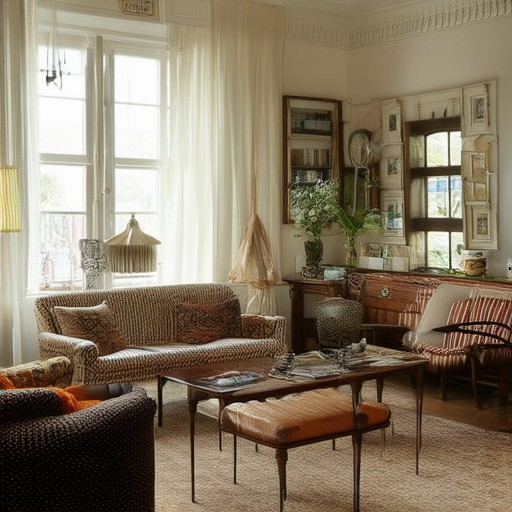
Nostalgic Decor Trends in Modern Interior Design
The resurgence of nostalgic decor trends in modern interior design reflects a growing desire for comfort, familiarity, and emotional connection within living spaces. These trends blend elements of the past with contemporary aesthetics, creating spaces that are both timeless and relatable.
- Comfort and Familiarity: Nostalgic decor evokes memories and creates a sense of warmth, making homes feel like safe havens. This is particularly important in today’s fast-paced, unpredictable world.
- Mid-Century Modern Revival: Styles from the mid-20th century, such as sleek, minimalist furniture and geometric patterns, are gaining popularity. These designs offer a balance of simplicity and sophistication, resonating with modern tastes.
- Soft Color Palettes: Softer, muted tones like sage green, mustard yellow, and deep earthy hues are replacing stark, bold colors. These shades are associated with comfort and create a calming atmosphere.
- Vintage Textiles and Fabrics: The use of vintage fabrics, woven textures, and intricate patterns adds a layer of history and craftsmanship to interiors. These textures are seen as luxurious and unique.
- Handmade and Artisanal Elements: Incorporating handmade decor and artisanal pieces brings a personal touch to spaces. This trend emphasizes quality and individuality, making homes feel more authentic and meaningful.
- Heritage and Heirlooms: There’s a growing appreciation for preserving and celebrating heritage through decor. Using heirloom pieces or reproduction antiques helps connect homeowners to their cultural roots.
Nostalgic decor also aligns with current design trends, such as sustainability. Repurposing vintage items and using eco-friendly materials supports environmental efforts while maintaining a classic aesthetic.
Competitors in the market include platforms like Etsy and vintage marketplaces, as well as brands like West Elm and Anthropologie . These players offer a variety of retro-inspired products, catering to the growing demand for nostalgic decor.

Key Features of Nostalgic Decor Trends
Nostalgic decor trends bring a sense of warmth and familiarity to modern spaces, blending the charm of the past with contemporary aesthetics. Here are the defining characteristics of these trends:
1. Vintage Furniture
Vintage furniture is a cornerstone of nostalgic decor, featuring pieces from earlier centuries that exude character and history. These items often come with unique imperfections, adding a touch of authenticity to any room. Popular options include mid-century modern sofas, rustic wooden tables, and ornate mirrors.
2. Retro Colors
Retro colors are bold, vibrant hues that evoke memories of the 70s, 80s, and 90s. Colors like avocado green, burnt orange, and mustard yellow are staples in nostalgic decor, providing a jolt of energy and nostalgia. These tones work beautifully in kitchens, bathrooms, and living areas.
3. Timeless Patterns
Patterns play a significant role in nostalgic design, with geometric motifs, floral prints, and stripes being common elements. These patterns nod to eras past, adding visual interest and a sense of tradition to spaces. They can be incorporated through wallpaper, textiles, or even tile designs.
4. Eclectic Mix
Nostalgic decor thrives on an eclectic mix, combining elements from different periods and cultures. This approach creates a unique and story-rich environment, often mixing Victorian antiques with mid-century modern pieces or global artifacts. The key is to balance these elements seamlessly.
5. Textile and Fabric Choices
Textiles and fabrics in nostalgic decor often reflect the styles of yesteryear, such as damask, chenille, or velvet. These materials offer a luxurious feel and contribute to a cozy, inviting atmosphere. They can be used in upholstery, curtains, or as decorative accents.
6. Handmade and Artisan Pieces
Handmade and artisanal items add a personal touch to nostalgic spaces. Whether it’s a hand-painted mural, a custom-made light fixture, or a handcrafted ceramic vase, these pieces bring uniqueness and craftsmanship to the room.
7. Natural Elements
Incorporating natural elements like plants, wood textures, and stone helps ground nostalgic spaces in nature. These elements create a connection to the past while adding a touch of organic beauty to the interior.
8. Lighting Solutions
Nostalgic lighting solutions often include Edison bulbs, pendant lights, and vintage-inspired chandeliers. These fixtures provide a warm, ambient glow that complements the overall mood of the space.
9. Wall and Ceiling Decor
Wallpaper and ceiling designs often feature intricate patterns, vintage-inspired art, or classic motivational quotes. These elements add personality and storytelling potential to the walls.
10. Accessories and Small Decor
Small decor items like vintage clocks, antique jewelry displays, and retro-inspired photo frames complete the nostalgic look. These accessories add detail and charm without overwhelming the space.
By incorporating these features, you can create a space that feels timeless, comforting, and filled with character. Nostalgic decor allows you to tell your own story while celebrating the beauty of the past.
What Defines Nostalgic Decor Trends?
Nostalgic decor trends are characterized by a blend of classic, vintage, and retro elements that evoke feelings of warmth, comfort, and a connection to the past. These trends often draw inspiration from earlier decades, combining timeless aesthetics with modern sensibilities to create unique and memorable designs.
Key Elements of Nostalgic Decor Trends
- Color Palettes: Soft, muted tones like sage greens, mustard yellows, deep browns, and soft pinks dominate nostalgic decor. These colors often reflect the hues of bygone eras, creating a sense of timelessness.
- Patterns and Prints: Floral motifs, geometric designs, and bold stripes are popular, drawing from vintage fabrics and historical textiles. These patterns add visual interest and a touch of nostalgia.
- Textures: Rough-hewn wood, distressed metals, and woven fabrics are frequently used to mimic the look of antiques and vintage items, adding depth and character to spaces.
- Lighting: Sconces, pendant lights, and table lamps with Edison bulbs or frosted glass create a warm, inviting ambiance reminiscent of earlier centuries.
- Furniture Styles: Repurposed and restored furniture, along with mid-century modern pieces, are staples in nostalgic decor. These pieces often tell a story and have a unique charm.
- Accessories: Vintage-inspired jewelry, artwork, and home decor items, such as old photographs, travel souvenirs, and heirlooms, are commonly featured in nostalgic settings.
The Appeal of Nostalgic Decor
Nostalgic decor appeals to a broad audience because it taps into emotions and memories associated with simpler times. It offers a sense of comfort and familiarity, making spaces feel cozy and inviting. Additionally, nostalgic design elements are highly versatile and can seamlessly transition between various room settings, from living areas to bedrooms and bathrooms.
How to Incorporate Nostalgic Trends Into Your Space
- Start with a statement piece, such as a vintage mirror or a mid-century modern lamp, to anchor the theme.
- Layer textures and patterns to create depth and visual interest, like pairing a floral wallpaper with a woven blanket.
- Use lighting effectively to enhance the warm, inviting atmosphere nostalgic decor is known for.
- Personalize your space by incorporating items with sentimental value or unique finds that tell your own story.
Nostalgic decor trends continue to evolve, blending the old-world charm of yesterday with contemporary design principles. By thoughtfully incorporating these elements, you can create a space that feels both familiar and fresh, resonating with anyone who appreciates the beauty of the past.
Explore more about retro sales and discover how you can bring nostalgic decor into your home. Visit our website to browse our curated collection of vintage items and find inspiration for your next design project.
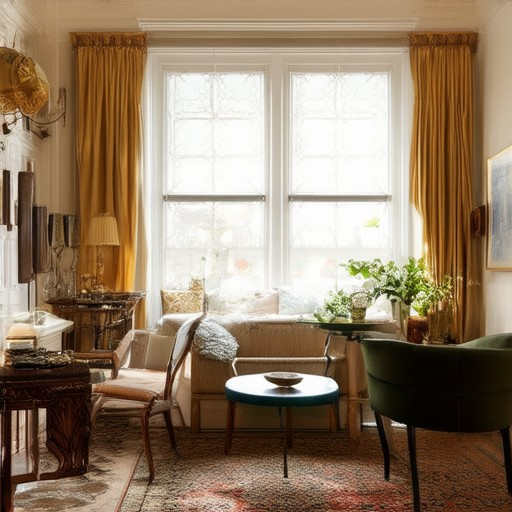
Nostalgic Decor Trends: A Look at What’s Inspiring Their Rise
The resurgence of nostalgic decor trends can be attributed to a blend of emotional, cultural, and economic factors. One of the primary drivers is the desire for comfort and familiarity in a rapidly changing world. As modern life becomes increasingly fast-paced and tech-driven, many individuals seek solace in the warmth and authenticity of yesteryear.
1. Connection to the Past
Nostalgia serves as a bridge between the present and the past, offering a sense of continuity and stability. Mid-century modern furniture, vintage clothing, and classic design elements are re-emerging due to their timeless appeal. These pieces often carry a story, making them more than just objects—they become part of a narrative.
2. Role of Social Media
Social media platforms have played a significant role in popularizing nostalgic decor. From Instagram to Pinterest, users share images of retro interiors, which inspire countless DIY projects and decorating ideas. This visual sharing creates a community around retro aesthetics, making them more accessible and desirable to a younger generation.
3. Economic Factors
There’s also an economic angle. The demand for unique, handcrafted, and one-of-a-kind items has surged. Vintage goods and antique finds offer a distinctiveness that mass-produced items simply can’t match. Additionally, the rise of sustainable living has made repurposing and recycling older pieces more appealing, aligning with eco-conscious values.
4. Brand Revivals
Many brands are reviving classic designs, recognizing that consumers are drawn to familiar yet timeless styles. These revivals not only tap into nostalgia but also build trust and loyalty, as customers feel they’re reconnecting with trusted, reliable products.
5. Influence of Digital Platforms
Digital platforms have amplified the reach of retro culture. Websites like Retro Sales curate vintage items and share stories about their history, connecting enthusiasts with meaningful pieces. Blogs and YouTube channels dedicated to retro lifestyles further fuel the trend, providing inspiration and tips for incorporating nostalgic elements into daily life.
In conclusion, the rise of nostalgic decor trends reflects a deeper human desire for comfort, authenticity, and connection. By embracing the past, modern consumers are not only decorating their spaces but also fostering a sense of community and heritage that transcends time.
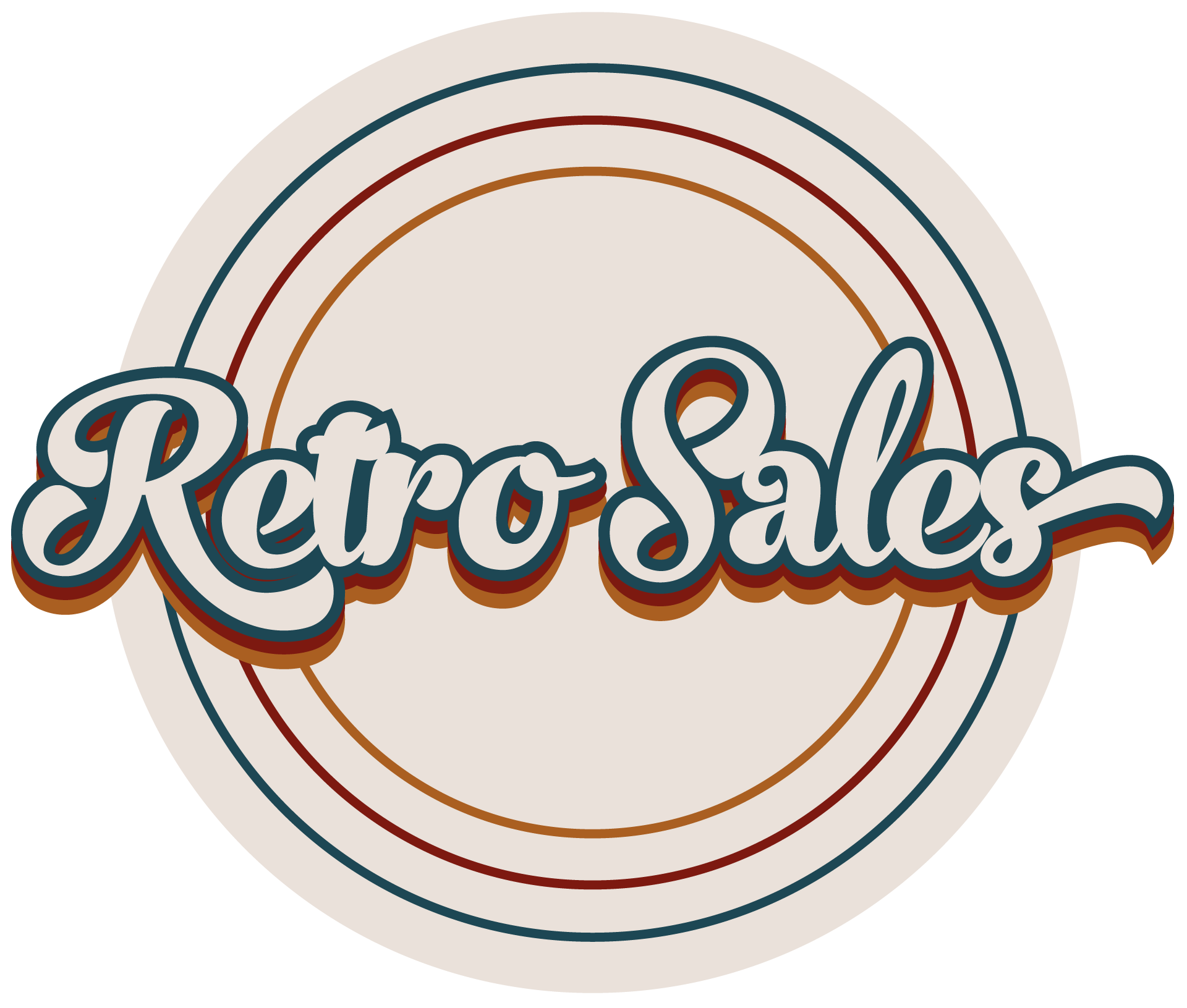
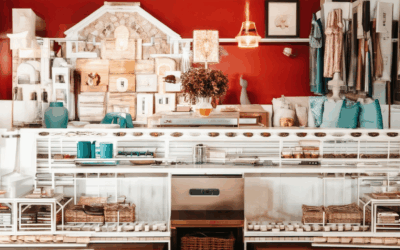
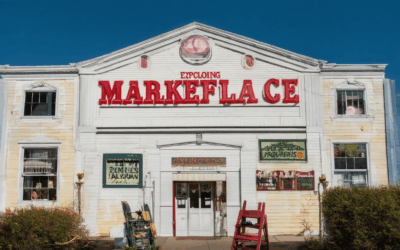
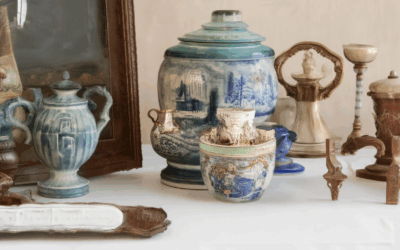
0 Comments